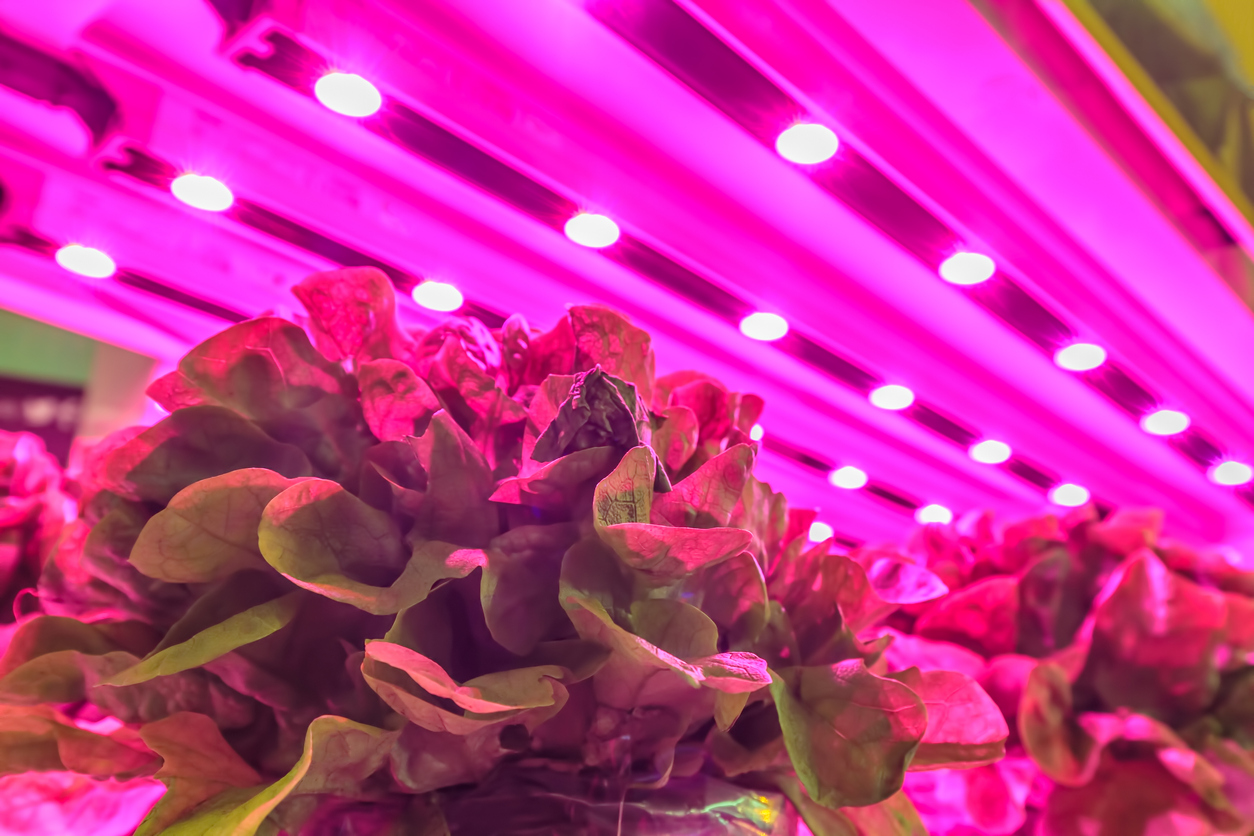Although I don’t always feel like it before I’ve had some caffeine in the morning, physiologically speaking, I am human. No surprise there. And I spend most of my awake time in light of some kind, whether that’s sunlight or the soft light of the bulb in my reading lamp or those dreadful fluorescent lights in the grocery store. Plants, on the other hand, need more than just the light from my cozy lamp or a candlelit dinner to thrive. Of all the possibilities, sunlight is the best kind of light for growing plants.
That’s fine if you live in a tropical climate and don’t need to worry about long, dark winters or freezing temperatures. For most of us, though, if we want to grow herbs, vegetables, or fruit indoors, we need to invest in a light for growing plants indoors.
Discover the 3 top options for growing vegetables indoors—when you access the FREEBIE Growing Vegetables Indoors for Beginners, right now!
How to choose the best light for growing plants indoors
To be transparent, choosing a light for growing plants indoors can get pretty scientific and detailed. For our purposes, we’re going to keep things simple. Here are the basics, though.
Plants use the energy from sunlight, along with water, air, and the nutrients in soil to feed themselves through photosynthesis. Plants also have different needs in the amount of sunlight they need. While you can get hyper-specific about spectrum colors and the energy of different kinds of light for growing plants, for most of us, a full spectrum light is the way to go.
So what does that leave us with?
1. Fluorescent lights. Despite my dislike of fluorescent lights for grocery shopping, they do make decent options for plants. They’re especially good for seedlings or non-flowering plants, although to get the biggest benefit, it helps to keep the plants close to the light. They don’t produce much heat, so they are an energy-efficient choice.
Fluorescent tube lights (we’ll get to compact fluorescent lights in a moment) come in different sizes, T12, T8, and T5. T5 is the smallest in diameter, but it’s also the most efficient, longest-lasting, and the quality of light is pretty close to that of sunlight. The bulbs themselves are inexpensive, and the fixtures can be, but you can also spend a couple hundred dollars on them if you want larger fixtures or free-standing systems.
Compact fluorescent lights, or CFLs, can get a little tricky. They were originally designed to replace incandescent bulbs, so they fit in any normal light socket, and they’re easy to find. However, they come in different light qualities, so you have both cool or “blue” light bulbs and warm or “red” light bulbs, which you’ll need to mix up to give your plants what they need. This is, of course, something you can set up, but to be honest, I’d probably make my life easy and just go for the full spectrum T5 light.
2. LED lights. Newest to the group are LED grow lamps. A few years back, you’d pay a pretty penny for these. You can still empty your wallet for some of these systems, but you can also have a decent number to choose from under $100.
LED lights are highly efficient, and you can find “smart” versions that will adjust the amount and type of light depending on where in their growth cycle your plants are. You can also find LED lights in the same T5 size as fluorescent lights, so they fit right into a fluorescent fixture.
3. Incandescent grow lights. I won’t make any friends in the lighting industry by saying this, but incandescent light is a practically pointless light for growing plants indoors. Certainly, you can find them, and they are inexpensive; you can get them for under $5 at some big box home improvement stores. But don’t waste your money. These lights simply don’t provide the type of light your plants need to produce fruits. Even worse, most of their energy is in the form of heat, rather than light, so you run the risk of burning your plants if they are too close to the light.
For most of us, one of these three options (well, two if you don’t count incandescent) will make a good light for growing plants indoors or in the colder months when we can’t put our herbs and cherry tomatoes outside.
Just be aware that, as with most things, choose carefully. The cheapest option won’t always be the least expensive in the long run.
Do you grow vegetables or fruit indoors? What kind of light do you use? I’d love to read your thoughts about this in the comments.
Discover the 3 top options for growing vegetables indoors—when you access the FREEBIE Growing Vegetables Indoors for Beginners, right now!
